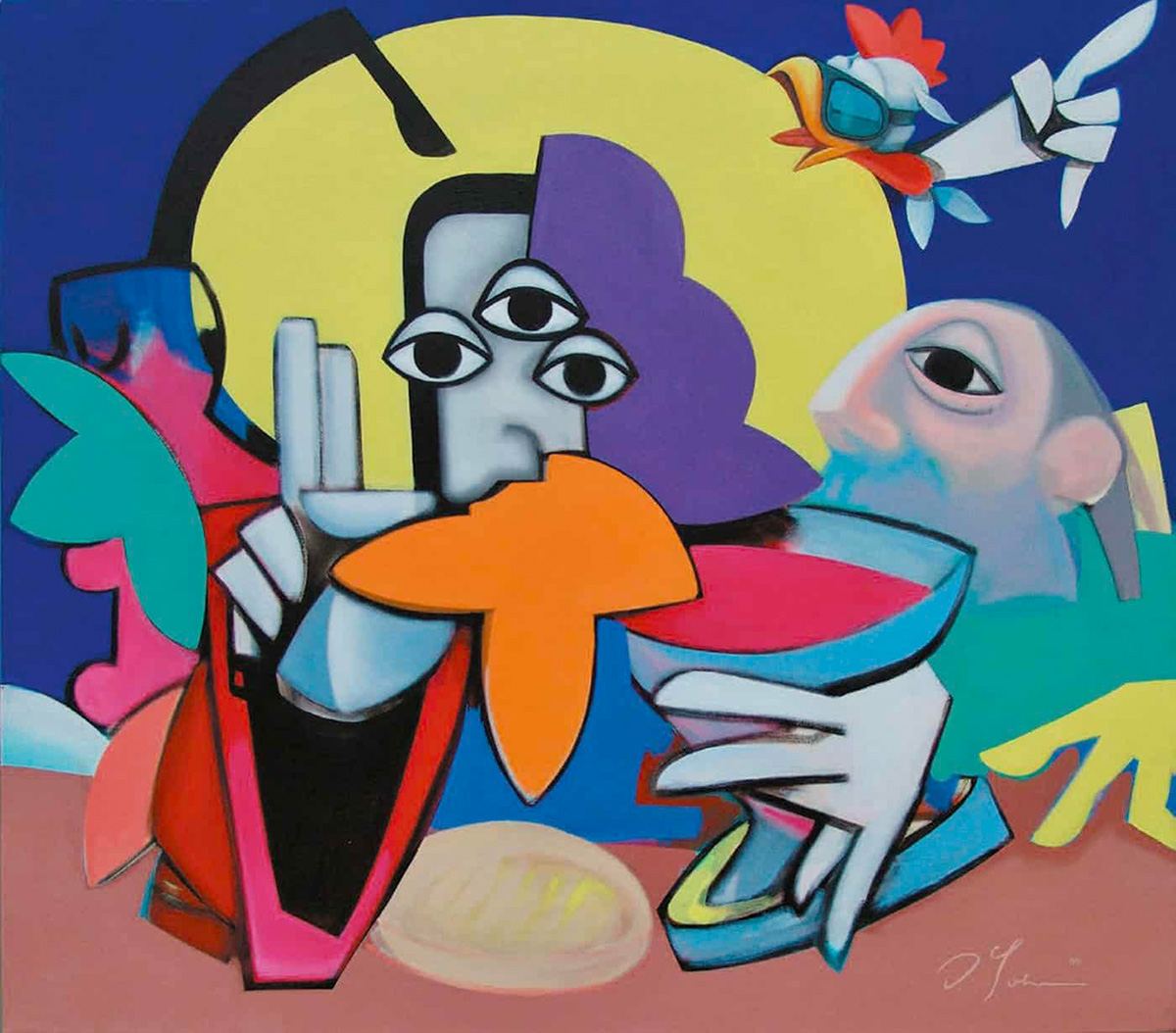The visual artist Diethard Sohn, pseudonym ditArdo, initiated comic cubism and shaped this style with his signature style.Journalist and valued network colleague Brigitte Muschiol spoke to ditArdo, who lives in Stuttgart. The result is an interview that is well worth reading and shows ditArdo to be a subtle, passionate and politically aware artist.
You can read it at www.der-geniesser.eu and business-on.de/hamburg
https://tk-kulturmarketing.de/aktuelles-und-pr
Author: ditArdo
-
interview
Tania Königshagen Kulturmarketing comments on the interview that the Hamburg journalist Brigitte Muschiol conducted with me on her website as follows:
-

Comic-Cubism as a concept and as a genre
The stylistic terms ‘comic’ and ‘cubism’ overlap in their formal approaches in ditArdo’s artistic language. The ‘comic’ is characterized by the means of line and surface, whereby the space is also defined by the surface. The striking effect is used together with synthetic ‘cubism’, the simultaneous and superimposed representation of different views or perspectives, to make high-contrast statements about the motif or experiences. The motif becomes a pictorial symbiosis of everyday experiences, dreams, lines, colors and structures. For example, the yellow tomcat stands for the image of laissez-faire, of roaming around in the midday sun.
In the artistic observation process, questions about the fourth dimension arise primarily in sunny Jakarta. What color are the streaks of light over the water? How much time is eight months? Is time yellow, red or blue?
These are just a few quotes from our lively email exchange in the ether.
Text: Dr. Wolter Abele, art historian on the exhibition ‘Out of The Common’ 2005At the beginning of the 1990s, ‘ditArdo’ developed his characteristic artistic language of ‘comic-cubism’. The term ‘comic-cubism’ was then coined by Fred Feuerbacher in 2004 in connection with ditArdo’s paintings in front of a wide audience.
-

Role models and inspiration
Conversely, ‘comic-cubism’ without ‘cubism’ without Braque or Picasso would of course hardly be conceivable. Just as it would hardly have emerged without Disney, Uderzo or Charles M. Schulz. However, ‘comic cubism’ is visibly and clearly going its own way in our time. ditArdo is convinced that ‘comic-cubism’ will establish itself as a term and a genre closely related to pop art.
Roy Schwartz, historian and critic of pop culture, has described Picasso’s influence on Cubism as follows (original source: link)Picasso’s revolutionary Cubism is considered the most influential art movement of the 20th century and earned him the nickname “father of modern art”. Its impact was so immense that it helped to inspire a host of other art movements around the world such as Futurism, Suprematism, Dadaism, Constructivism, Vortism, De Stijl and Art Deco.
From an article by Roy Schwartz historian and pop culture critic
But Picasso was also an avid fan of American comic strips, especially “The Katzenjammer Kids”, and this influence is obvious. If Cubism was the opening shot of modern art, comics gave him something of the “Bang!”
Picasso’s Comics: How Cubism Was Influenced by an American Comic Strip
Roy Schwartz is a pop culture historian and critic. His work has appeared in CNN.com, New York Daily News, The Forward and Philosophy Now, among others. His latest book is the Diagram Prize-winning ‘Is Superman Circumcised? The Complete Jewish History of the World’s Greatest Hero.’ Follow him on Twitter, Instagram and Facebook @RealRoySchwartz and at royschwartz.com.
Pablo Picasso was already impressed by Rudolf Dirks and other US American comic artists, and so there has always been an art-historical link between the comic strip and ‘Cubism’, which was celebrated as revolutionary.
-
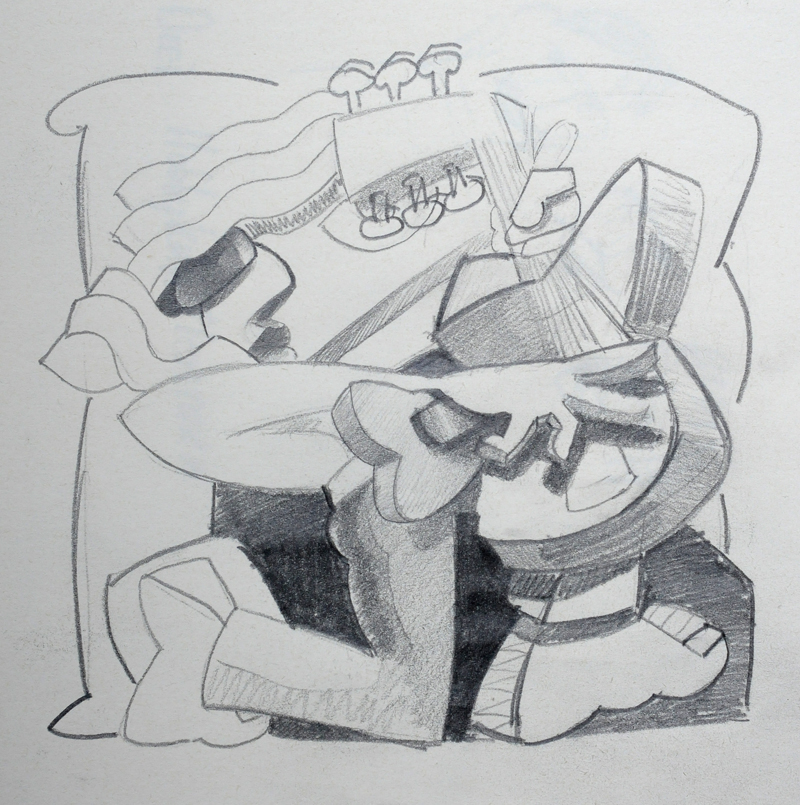
CHILDHOOD AND YOUTH AND The FIRST COMIC-CUBISTIC PAINTINGS
Inspired by comic artists such as Disney, Uderzo or Charles M. Schulz, I mostly drew my own characters.
During my studies at the Merzakademie, I also drew characters such as Tick, Trick and Track or Donald Duck for movie commercials. That was quite lucrative weekend work. This work with well-known ‘comic’ characters remained the exception. Some mystical figures and scenes were also created at this time.
I then painted my first ‘comic-cubist’ pictures at the beginning of the 90s. The figure no longer played the main role in them, but rather the interplay of the different perspectives, the colored surfaces, the lines and structures.
Later, some of these became so abstract that finally no whole figures were recognizable any more, but only the lines and shapes were reminiscent of ‘comics’. From then on I began to add realistic elements to my ‘comic’ figures. In the meantime, realistic-looking elements are mixed with comic-like forms. New aesthetic elements and surreal scenes emerge.My childhood in the 60s, like that of so many others of my generation, was characterized by comic figures, ‘pop art’, chewing gum and Coca-Cola. But while other children struggled with English, Latin or physics at school, I used every minute of my time at school to draw, namely ‘comics’.
-

‘ditArdo’ an Avatar?
Since I work as an artist on very different ‘art projects’, it became clear at some point that it is better for the outside world to name projects that are characterized by different styles individually. So it made sense to assign them a kind of ‘avatar’, an ‘artist person’ – but identical to one and the same person in the end.
Art is free. And in order for it to be free, it is important that artists do not allow themselves to be pigeonholed, which of course also applies in the context of a constantly changing and developing body of work. Neither market mechanisms nor expectations should stand in the way of the artistic process.
Artist names can be helpful to differentiate ‘soft’ or if the pseudonym becomes a phantom, see ‘Banksy’, ‘hard’.
‘ditArdo’ is not a phantom. ditArdo’ consciously and ‘softly’ distinguishes itself, also to create a little more space.
Naturally with its own signature
The name ‘ditArdo’ came about back in the 1980s, when I was painting a central pub in Leonberg together with a fellow student. They often called me ‘der Künschtler’ or ‘Diethardo’, which then became ‘ditArdo’.
A pseudonym, an avatar, an artist name, a brand, a label – ‘ditArdo’ consciously chosen and based on my own life story.
-
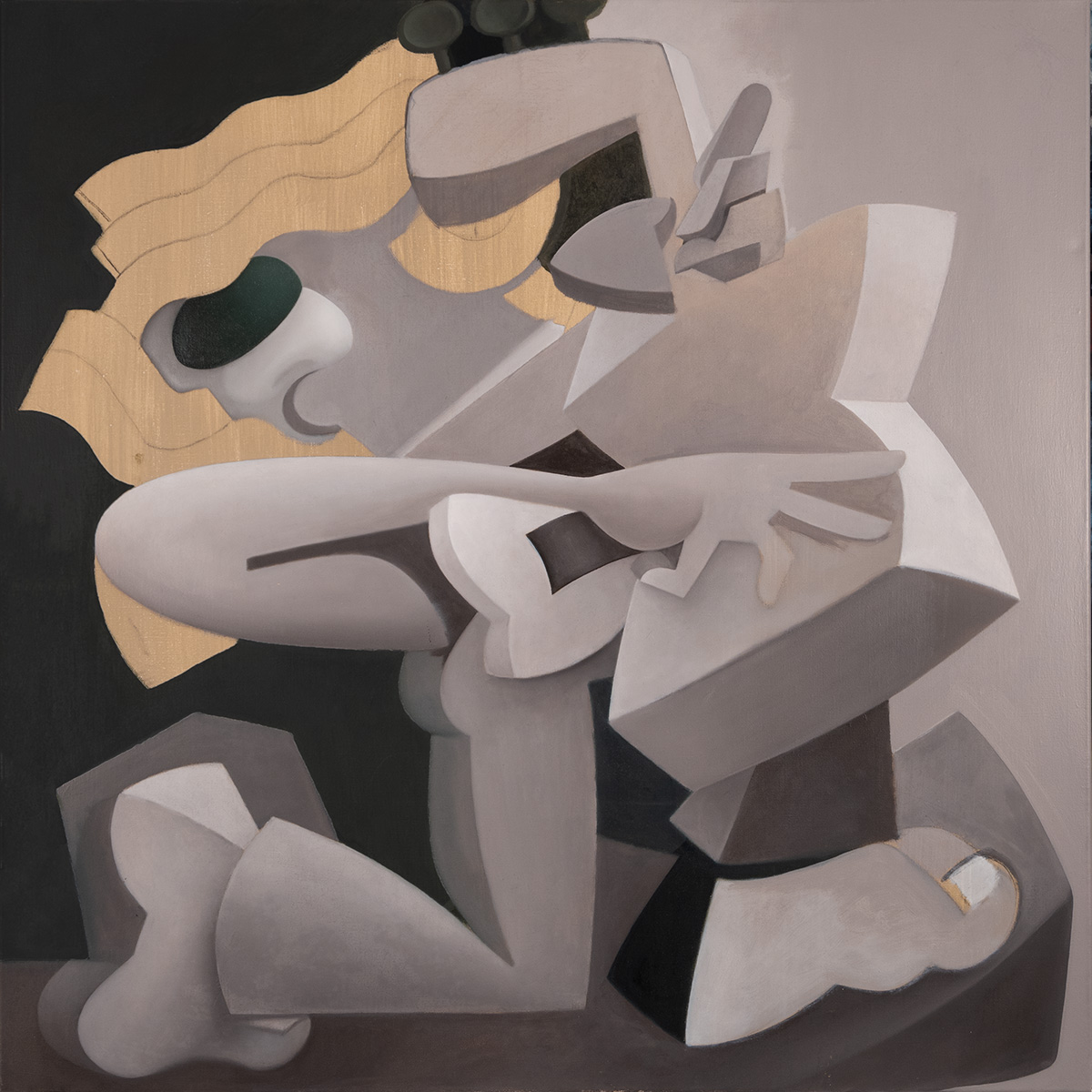
Art moves LE
Some of the pictures will be shown here for the first time in public, including the “Jakarta Edition”, a small series of newly interpreted motifs from my time in Jakarta from 2005-07.
Any proceeds from the sale of one or more pictures will of course go 100% to the artist and thus to the current and future art projects.
VernissageFriday March 08, 2024
We invite you to18:00 Official opening
in the Zehntscheuer, Bürgersaal
Our vernissage
from 19:30 in the store:Sassenscheidt Augenoptik
main street 74Jörg Schweigert and Ralf Schröder are looking forward to your visit.
The vernissage will be accompanied by catering. The exhibition runs until 22.03.2024
Opening hours:
Mon. – Fri. 09.30 – 18.00 h
Sat. 09.30 – 13.00 hBribed with a pair of glasses and persuaded by friend Ralf: ditArdo – the comic-cubist takes part in this promotional fun-and-art event and has a lot of fun doing it.
-
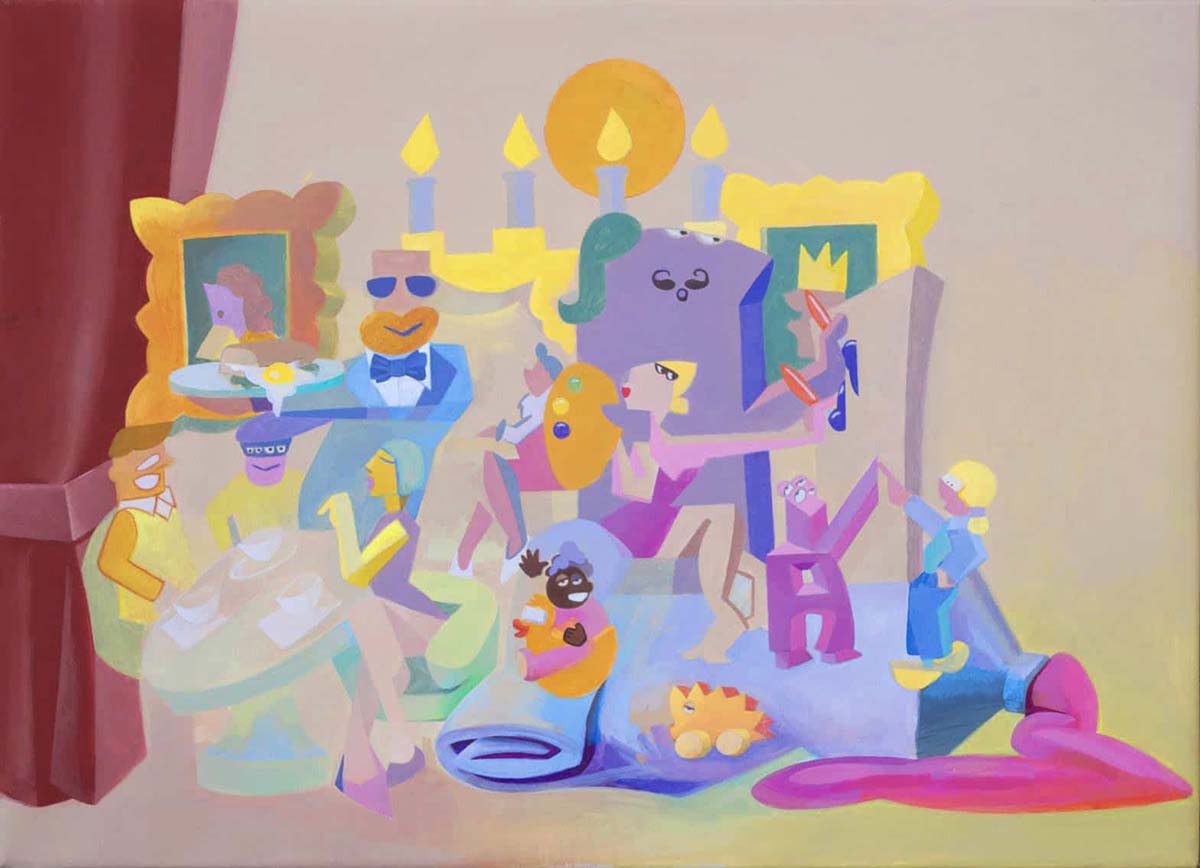
Cafe Künstlerbrot
Military canteen
St. Gallen / LachenELTERN CAFÉ
Parents enjoy a cup of coffee
and eat a sandwich | 09:00 – 22:00CHILDREN’S ART STUDIO
Children work with professional artists | 09:00 – 13:00LIVE PROGRAM
Live coffee house music,
Information about Café Künstlerbrot | 09:00 – 22:00QUARTIER CULTURE FAIR
What’s going on in Lachen
and what’s on offer for families | 09:00 -16:00Military canteenSt. Gallen / Lachen ELTERN CAFÉParents enjoy a cup of coffeeand eat a sandwich | 09:00 – 22:00 CHILDREN’S ART STUDIOChildren work with professional artists | 09:00 – 13:00 LIVE PROGRAMLive coffee house music,Information about Café Künstlerbrot | 09:00 – 22:00 QUARTIER CULTURE FAIRWhat’s going on in Lachenand what’s on offer for families |…
-
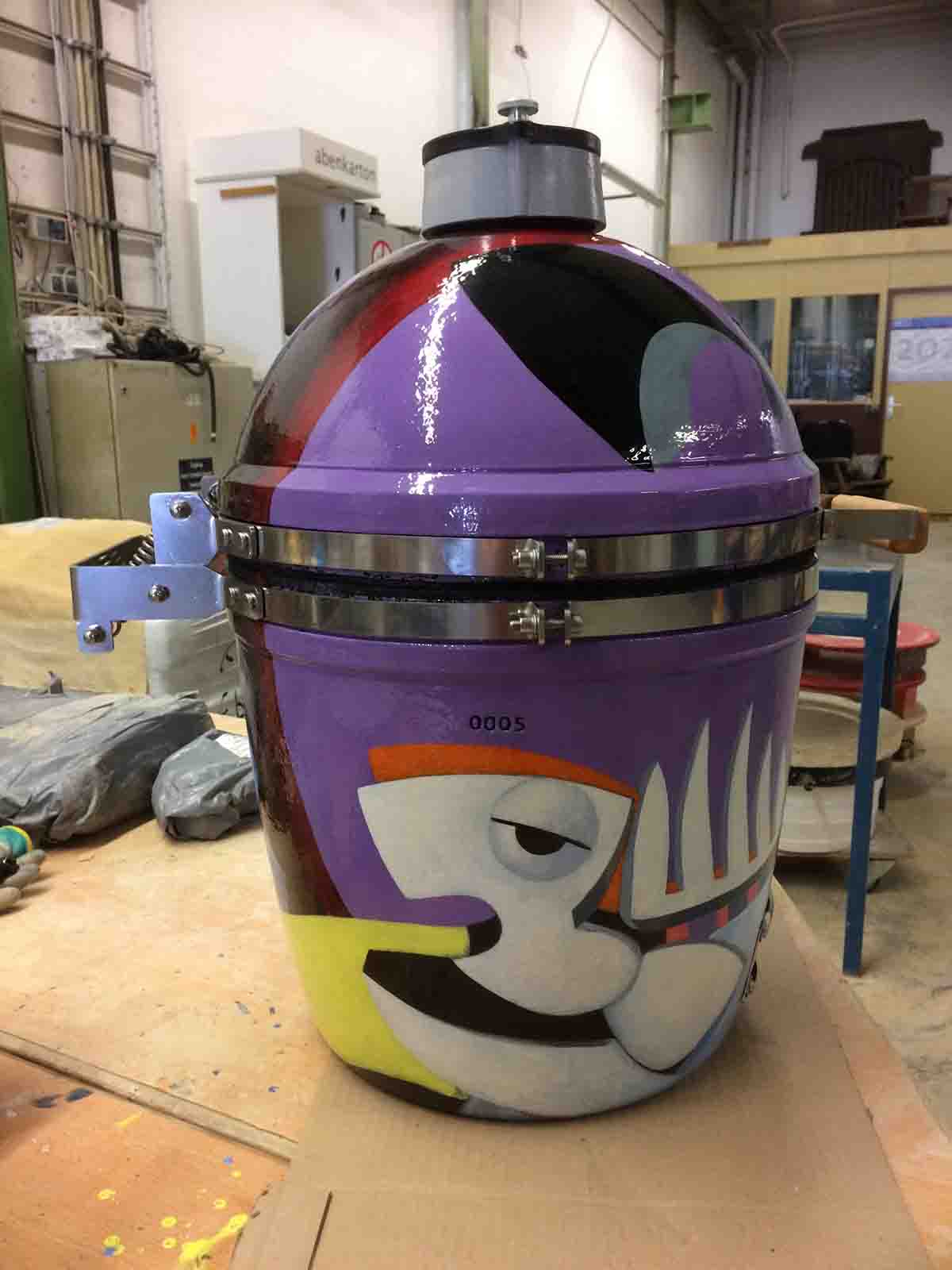
30 years of comic cubism
To mark this occasion, the KAMADO B10 GERMANY manufactory is releasing this hand-painted Kamado Kubicom in collaboration with ditArdo the comic cubist
The Kamado KUBICOM is named after the Comic Cubism style developed by ditArdo, which ironically reflects the classical modernism of Georges Braque or Pablo Picasso and translates it into pop art-inspired comic strips.
The transfer to the three-dimensionality of a Kamado cites the totality of perspective that once made Cubism a revolutionary art form.
To mark this occasion, the KAMADO B10 GERMANY manufactory is releasing this hand-painted Kamado Kubicom in collaboration with ditArdo the comic cubist The Kamado KUBICOM is named after the Comic Cubism style developed by ditArdo, which ironically reflects the classical modernism of Georges Braque or Pablo Picasso and translates it into pop art-inspired comic strips.…

